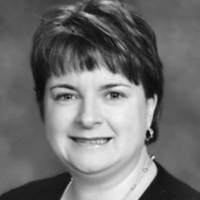This text-based course is a transcript of the webinar, ALS: A Clinical Population with Unique Communication Management and AAC Needs - Part 1, presented by Kim Winter, MA, CCC-SLP.
Course Learning Objectives
- After this course, participants will be able to describe the neurologic underpinnings of ALS.
- After this course, participants will be able to describe the differences between a compensation/management approach versus a treatment/remediation approach to SLP interventions.
- After this course, participants will be able to describe the Speech Staging System for ALS, the roles of the SLP and various interventions for each stage.
I really appreciate the opportunity to be here today. I’d like to get started right away because we have a good amount of information to cover. I do need to disclose that I received an honorarium from SpeechPathology.com for this presentation. I have no other financial or non-financial relationships to disclose.
ALS Epidemiology
In terms of ALS epidemiology, ALS is fairly rare compared to other disorders and diagnoses that we might encounter in our clinical experiences. On average, there are about two out of 100,000 individuals living with ALS in the United States each year.
I work in a neuromuscular clinic, and working with patients who have ALS is very much a part of my every day routine. But, for many of you, ALS might be something that you may only encounter rarely, which makes it challenging to determine how best to provide the speech services to this unique clinical population. Then there are the AAC needs of the patient; which not all SLPs have the training or the experience to provide that service effortlessly. When you combine those two factors, it is easy to see why this can be a challenging situation.
In terms of survival, these individuals, unfortunately, do not typically live long once the diagnosis is made because it is a terminal disease. The onset is typically between ages 30 to 60, but can certainly extend beyond that age range in both directions. I think the youngest person we've ever had in our clinic was, unfortunately, 19-years-old. Men tend to develop the disease slightly more often than women. It's not entirely clear as to why that is.
Additionally, military veterans, particularly those that were deployed during the Gulf War, are approximately twice as likely to develop ALS. Again, it’s not really known why that is. If there's any kind of silver lining to this phenomenon, it's that ALS is recognized by the VA as a covered benefit. Therefore, when it comes to getting an AAC device or any type of durable medical equipment such as a power wheelchair, a hospital bed, etc. it is fully covered by the VA as long as the veteran is registered with them. Be sure to ask all your patients if they are veterans. If they are, find out whether or not they are registered with the VA.
Neuroanatomy Review
What is ALS?
Let's review the neuroanatomy and the neurology behind ALS. If we break down each term of the diagnosis, ‘amyotrophic’ means without nourishment to the muscles. ‘Lateral’ obviously refers to the side of the spinal cord. ‘Sclerosis’ refers to the hardening of the spinal cord, particularly in the advanced stages of ALS. There is an organization, Project ALS (http://www.projectals.org/what-is-als) that shows a great video depicting what happens to the muscles and the nerves in ALS. The video's pretty short and is certainly worth the time.
As a snapshot of what ALS is, we know that it is called Lou Gehrig's disease. It's progressive. It is neurodegenerative. It involves both the upper and the lower motor neurons. I want to emphasize that it is a very heterogeneous presentation. Ten patients with ALS can all present very differently. It's often not until the end stages, or the terminal stages of the disease, that patients tend to look a bit more similar. It is very diverse in terms of its presentations.

